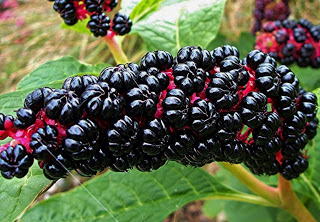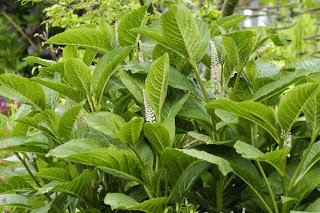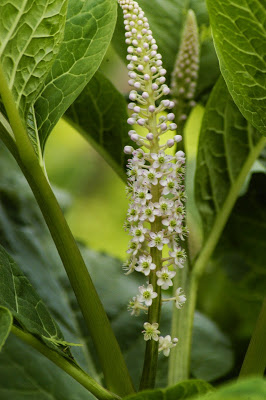 |
| Phytolacca acinosa |
Indian Poke, Pokeberry
Phytolacca acinosa
Type: Perennial
Exposure: Sun / Part Shade
Water: Regular
Here’s one that might be a bit unfamiliar. This bold perennial emerges each spring to produce a handsome clump of lime green foliage reaching 5ft (1.5m) tall by 3ft (90cm) wide. These leaves sweep slightly upward from the stems, and can reach 7in (18cm) long. Spring brings greenish-white to pure white flowers in densely packed spikes peeking out from the foliage. These will last right into summer when they are transformed into clusters of berries. These ripen in late summer to produce glossy black fruit which are attractive to birds. Related to the exotic South American tree that we featured in our first “name that plant” segment, this is a unique, bold perennial that would work well for creating a “tropical” look in our temperate climate.
Something to note is that all parts of the mature plant is toxic (not to birds, just us mammals). In India, the young leaves are eaten, as are the new shoots, but the older growth, which contains the toxin, is left alone. Some information says that the pink flowered varieties are poisonous while this one isn’t, but I’ve not been able to confirm this. So please friends, play it safe; don’t eat your poke. Not even the berries.
Oh, and ask for it by the latin name. “Indian Poke” is also used as a common name for an entirely different plant. And besides, I can’t help thinking that the sentence “I’m looking for an Indian Poke” might lead to a most unfortunate misunderstanding.
Cheers,
John


